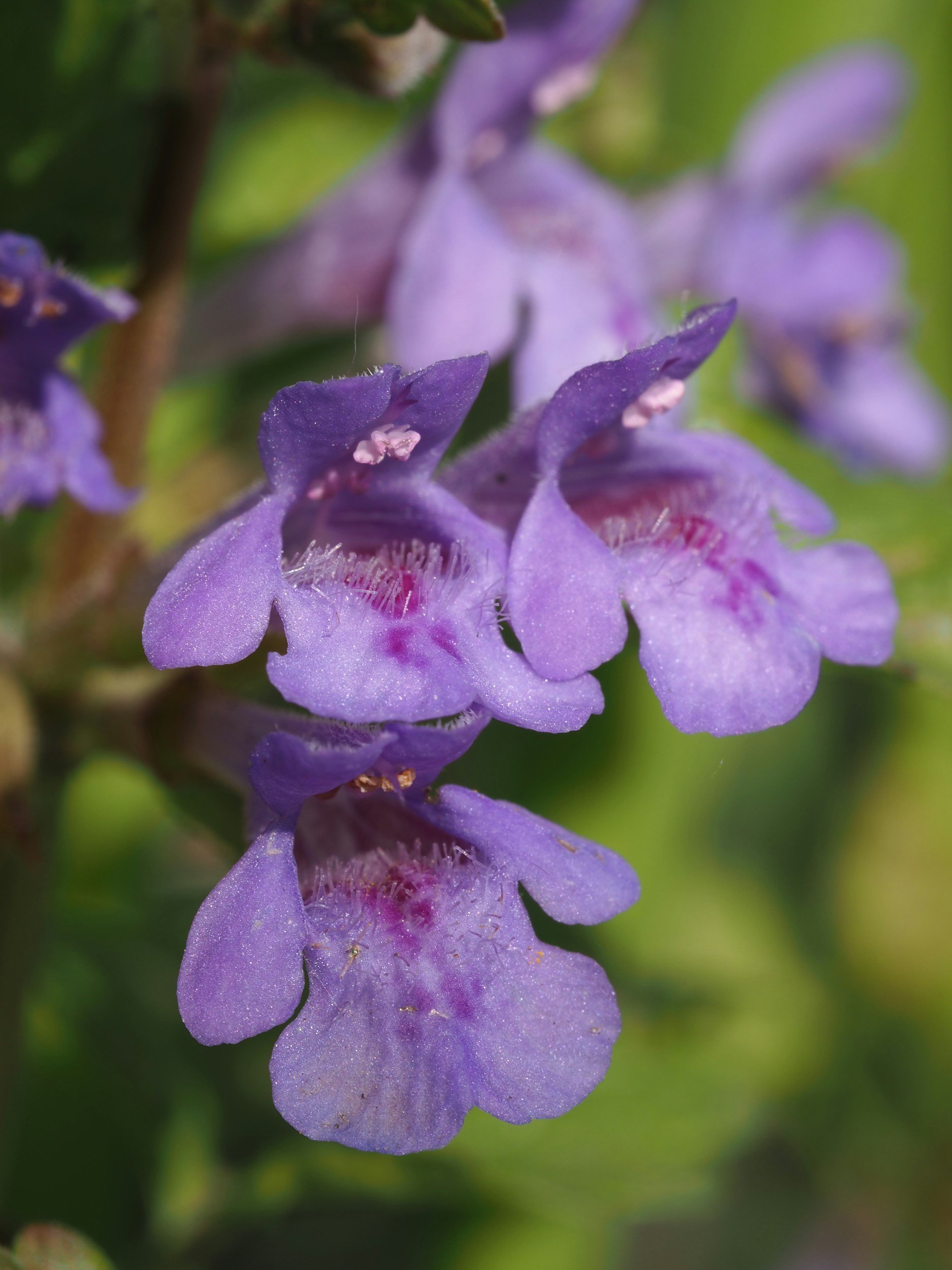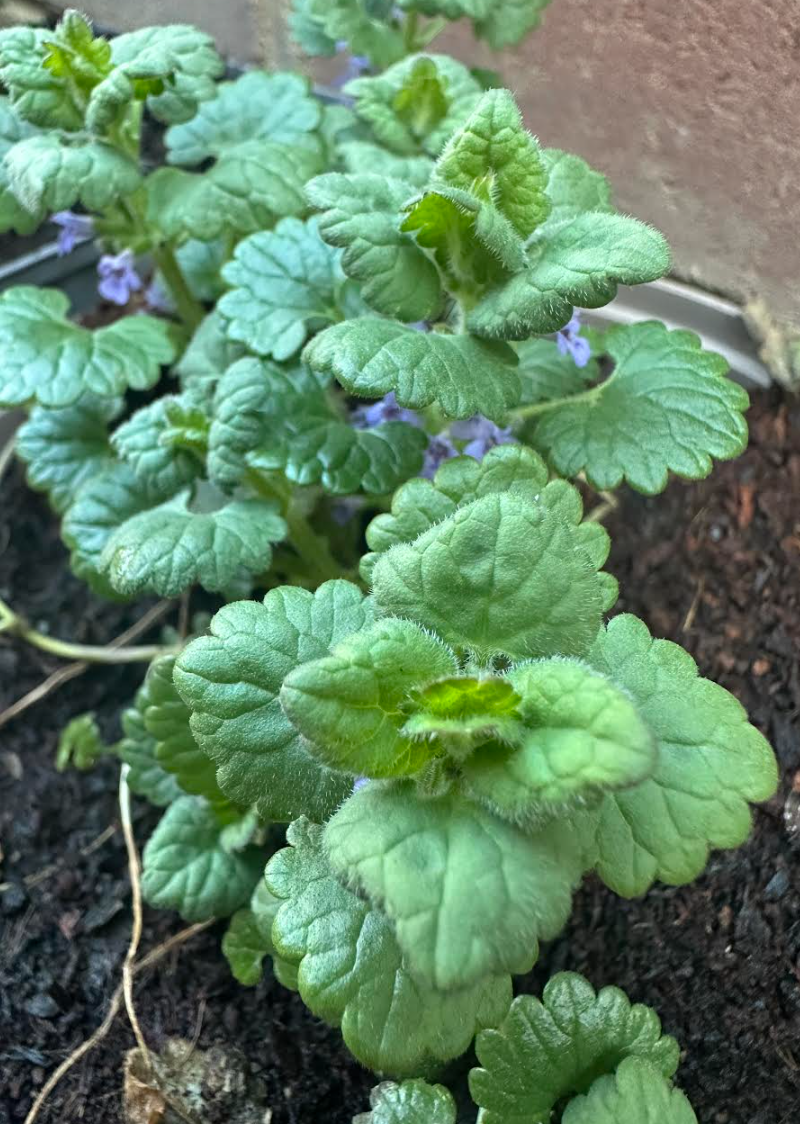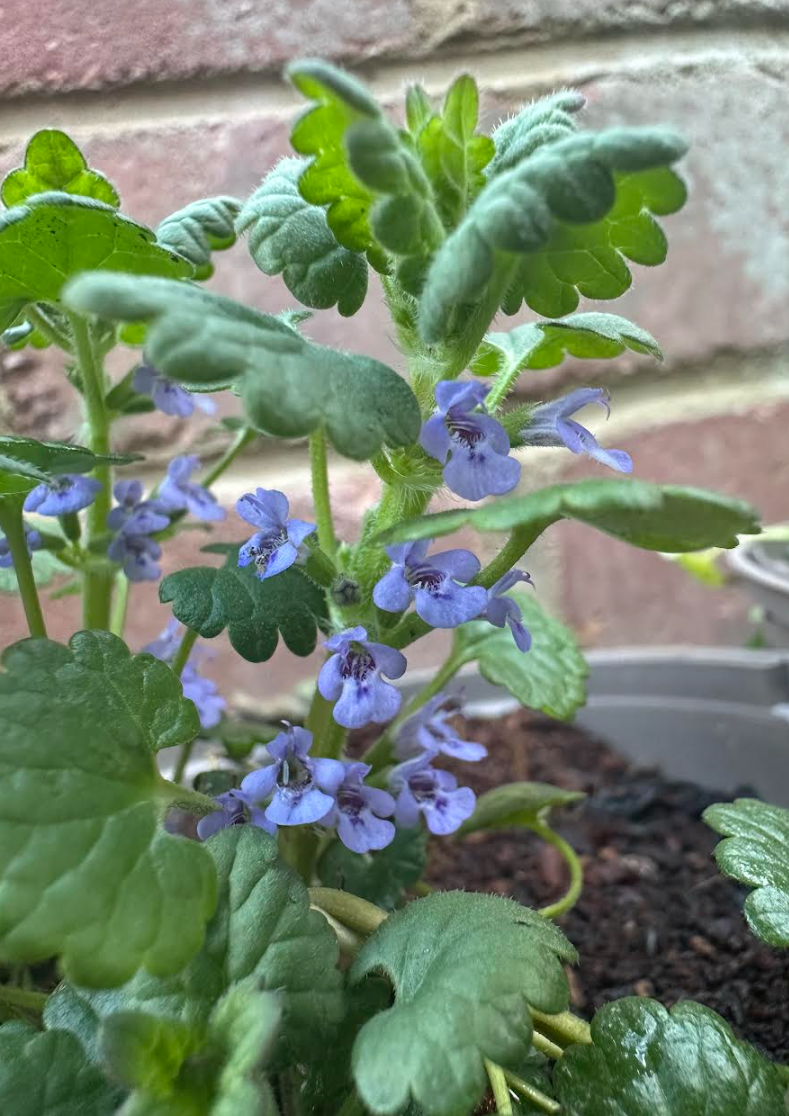
Ground Ivy
Ground Ivy (Glechoma hederacea)
Plant family
Lamiaceae
Other significant names
Ale hoof
Gill-go-over-the-ground
Haymaids
Tun-hoof
Hedge-maids
Parts used
Flos (Flowers)
folia (herba)
Typical forms of prescription
Infusion
Tincture
Ground Ivy (Glechoma hederacea) - Clinical Snapshot
Primary Actions
Decongestant
Expectorant
Diaphoretic
Anthelmintic
Anti-catarrhal
Anti-inflammatory
Astringent
Digestive
Diuretic
Anodyne
Tonic
Vulnerary
Antiscorbutic
Primary Indications
Allergic rhinitis
Hay fever
Sinusitis
Fever
Tinnitus
Cold & flu
Sore throat
Ear infections
Asthma
Indigestion
Diarrhoea
Nausea
Bloating
Fluid retention
Cystitis
Urinary tract infections (UTIs)
Haemorrhoids
Gout
Cuts and wounds
⚠️Cautions / Safety⚠️
Safe in small doses only
In large doses, it may irritate the stomach, intestines, kidneys, and liver
Avoid in kidney disease
Avoid during pregnancy
Glechoma hederacea
Phytochemistry and Pharmacology
-
Includes: Apigenin, luteolin, quercetin
Action: Antioxidant, anti-inflammatory, vascular tonic
Use: Flavonoids support capillary strength, help modulate inflammation, and provide gentle tissue support, especially useful in chronic respiratory conditions, seasonal allergies, and venous insufficiency.
-
Action: Digestive stimulant, mild tonic
Use: These enhance bile flow and digestion, making Ground Ivy a good choice for sluggish digestion, especially when tied to post-viral fatigue or lymphatic congestion.
-
Includes: Ursolic acid
Action: Anti-inflammatory, antimicrobial, hepatoprotective
Use: Triterpenoids add to Ground Ivy’s ability to soothe inflamed tissues, especially in the gastrointestinal tract, and may contribute to its mild liver-supportive properties.
-
Action: Astringent, anti-inflammatory, toning
Use: The tannins in Ground Ivy contribute to its toning and drying actions, making it helpful for leaky tissues, diarrhoea, and wound healing. They also support their role in reducing excess secretions in the respiratory and digestive tracts.
-
Includes: Pulegone, menthone, cineole
Action: Expectorant, anti-catarrhal, mild antimicrobial
Use: These aromatic compounds help clear mucus and congestion, particularly in the sinuses and ears. Traditionally used for ear, nose, and throat (ENT) conditions, the volatile oils help to loosen phlegm, reduce catarrh, and offer antimicrobial support.
Traditional use
Ground Ivy has a long history as a versatile folk remedy across the UK and Europe. In the 20th century, ground ivy tea was widely used in Britain as a general "cure-all", especially for respiratory and digestive issues. Its high vitamin C content made it popular for treating scurvy and as a spring tonic to refresh and fortify the system after winter. Earlier traditions saw it used in ale brewing before the widespread adoption of hops for flavour and its cleansing and preservative properties.
Clinical description
Ground Ivy is a valuable and underused dispensary herb—abundant, familiar, and deeply effective. Its primary modern use is in upper respiratory tract conditions, particularly where catarrh, congestion, or sinus inflammation is present.
It has astringent, mildly expectorant, and anti-inflammatory properties, making it ideal for:
Sinusitis, ear congestion, and head colds
Sore throats, wet coughs, and allergic rhinitis
Phlegmy headaches and tinnitus associated with blocked sinuses or upper respiratory irritation
Its gentle diaphoretic action encourages sweating, making it suitable in infusions for colds and flu. Additionally, it may help relieve ear infections, particularly where fluid build-up is involved, due to its ability to help drain the inner ear.
As a member of the mint family, ground ivy also contains carminative volatile oils, antimicrobial action, and tannins, making it helpful for mild digestive complaints such as bloating, indigestion, and gut inflammation. Its antiseptic and astringent nature also supports wound healing.
Best used as a hot infusion or tincture, ground ivy blends well with herbs like Elderflower, Thyme, Plantain, or Yarrow in seasonal sinus and chest support blends.
Cultivation/harvesting
Ground Ivy is a hardy creeping perennial found growing wild in hedgerows, gardens, and woodland edges. It thrives in partial shade and moist, well-drained soil, often carpeting shady garden areas or forming part of wild ground covers.
Harvest when the plant is in full flower, usually in spring to early summer, when its aroma and volatile oil content are strongest.
Cut aerial parts (leaves and flowering stems) on a dry day, preferably in the morning after the dew has lifted.
Use fresh in infusions or dry in small bundles in a cool, airy location, then store in airtight jars out of direct sunlight.
Ground ivy is an excellent pollinator plant, feeding bees early in the season, and makes a useful addition to medicinal garden borders or as a living mulch beneath taller plants.
Key Botanical Features of Ground Ivy (Glechoma hederacea)
Growth
Type: Perennial, creeping herbaceous plant.
Size: Typically grows 10–30 cm (4–12 inches) tall but spreads widely through long, creeping stems (stolons).
Stem: Square-shaped, characteristic of the mint family, with a trailing habit. The stems root at the nodes as they spread along the ground.
Leaves
Type: Opposite, simple.
Shape: Kidney-shaped (reniform) to rounded, with scalloped edges (crenate margins).
Size: 1–3 cm (0.4–1.2 inches) across.
Texture: Soft, sometimes slightly hairy, with a crinkled surface.
Colour: Bright green to dark green, sometimes with a purplish tint, especially in colder temperatures.
Aroma: Strong, minty fragrance when crushed.
Flowers
Type: Small, tubular, two-lipped flowers, characteristic of the mint family.
Size: 1–2 cm (0.4–0.8 inches) long.
Colour: Purple to violet-blue, sometimes with darker markings.
Flower Arrangement: Arises in whorls of 2–3 flowers from the leaf axils.
Blooming Period: Spring to early summer (typically April to June).
Pollination: Primarily by bees and other insects.
Fruits & Seeds
Fruit Type: Small, dry nutlets, typical of the Lamiaceae family.
Seed Dispersal: Primarily by gravity or water, but also spreads aggressively via vegetative stolons.
Roots
Type: Fibrous roots, with adventitious rooting at stem nodes, allowing for rapid spreading.
Function: Helps anchor the plant while enabling extensive ground cover and vegetative reproduction.
Habitat & Growth Conditions
Climate: Adaptable to temperate and subtropical climates.
Soil: Thrives in moist, nutrient-rich soils, but can tolerate a range of soil types.
Sunlight: Prefers partial shade, but can tolerate full sun or shade.
Distribution: Native to Europe and Asia, but widely naturalised in North America, where it grows in lawns, woodlands, meadows, and disturbed areas.
Sustainability/conservation
Abundant, least concern





Sources
Bartram, T. (1998). Bartram’s Encyclopedia of Herbal Medicine. Constable.
Fisher, C. (2009). Materia Medica of Western Herbs, (2018 edition). Finchley Road, London. Aeon Books.
Hedley, C & Shaw, N. (2020). A herbal book of making and taking. Finchley Road, London. Aeon Books.
Hoffmann, D. (2003). Medical Herbalism: The Science and Practice of Herbal Medicine. Healing Arts Press.
McIntyre, A. (2019). The complete herbal tutor, revised and expanded edition. Finchley Road, London. Aeon Books.
Plants of the World Online | Kew Science. (n.d.). Plants of the World Online. https://powo.science.kew.org/
Disclaimer: This page is for educational purposes only. Consult a qualified medical herbalist before using herbs, especially during pregnancy, when trying to conceive, while breastfeeding, for medical conditions, or with children.
Read the full disclaimer → Medical Disclaimer.





